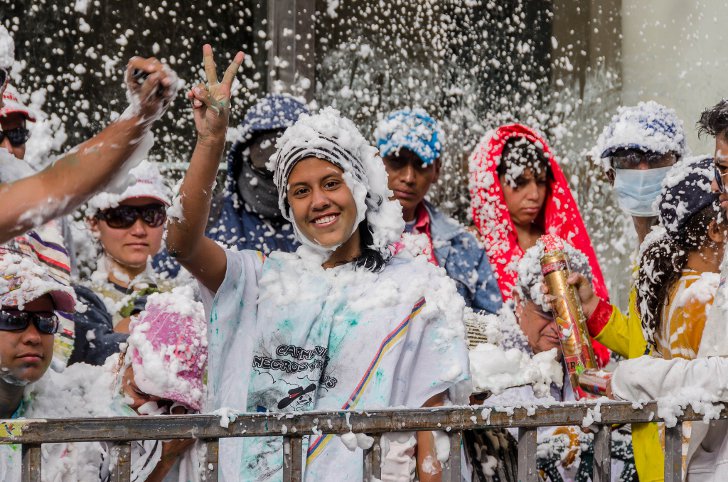The roots of the celebration date back to the slave rebellion of 1607 that took place in Remedios. In the wake of the rebellion, black slaves from Popayán demanded a day of rest in which they would be truly free. The Spanish Crown granted a day off for people of color to preserve social peace. On January 5, the black population of Popayán flooded the streets, dancing to African music. Later the celebration spread to other cities.
However, the actual carnival in Pasto was established in the mid-1920s. The first organized parade took place on January 6, 1926. It was initiated by senior students from local high schools and the University of Nariño.
Although the carnival officially begins on January 2, pre-carnival festivities start much earlier. In Pasto, festive events take place on December 28 and 31. December 28 is the Holy Innocents’ Day. In Spain and Hispanic America it is an equivalent to April Fool’s Day. In Colombia it is associated with water fun so Pasto hosts a Water Carnival. December 31 is New Year’s Eve. On this day, the residents of Pasto burn dolls or puppets made from paper, old clothes and sawdust to represent the old year.
Blacks and White’s Carnival officially starts on January 2. The opening day features a tribute to Our Lady of The Marcy, the Colonies Parade, and Pastorock (an event aimed to promote alternative music). January 3 is the day of Children’s Carnival (Carnavalito). On this day, children participate in their own parade with floats and costumes.
The highlight of January 4 is the arrival of the Castañeda family. According to a local legend, a family of colorful characters came to Pasto in 1929. Today, the family is portrayed as a group of cartoonish characters traveling across the citiy with all their luggage, including the visibly pregnant bride, the flamboyant grandmothers, mischievous children, and the drunk priest. Most characters are portrayed by adults, including men cross-dressed as women.
January 5 is known as Blacks’ Day. This day marks the date when black slaves were free to rest and celebrate. People paint their faces black and flood the streets, shouting ¡Que vivan los Negros! (Hurray the Blacks!). Blacks’ Day features open-air concerts in city parks and a visit from the Queen of Carnival.
On January 6, Pasto celebrates Whites’ Day. The main attraction of the day is the Grand Parade running through the streets of downtown. The nearly 7 km long parade featuring floats and performers marches along the 15 km route. People paint their faces white using talc, flour or special cosmetic paints and gather to watch the parade, cheering and throwing confetti. The motto of the day is ¡Que vivan los Blancos! (Hurray the Whites!).
The carnival ends on January 7. Its final day is dedicated to rural fairs and the celebration of Cuy’s Day. Cuy is the local name of the guinea pig. Guinea pigs are eaten in some areas of Colombia, so on January 7 locals and tourists are treated to the typical dish of the region.

Photo by Daniel Reyes



